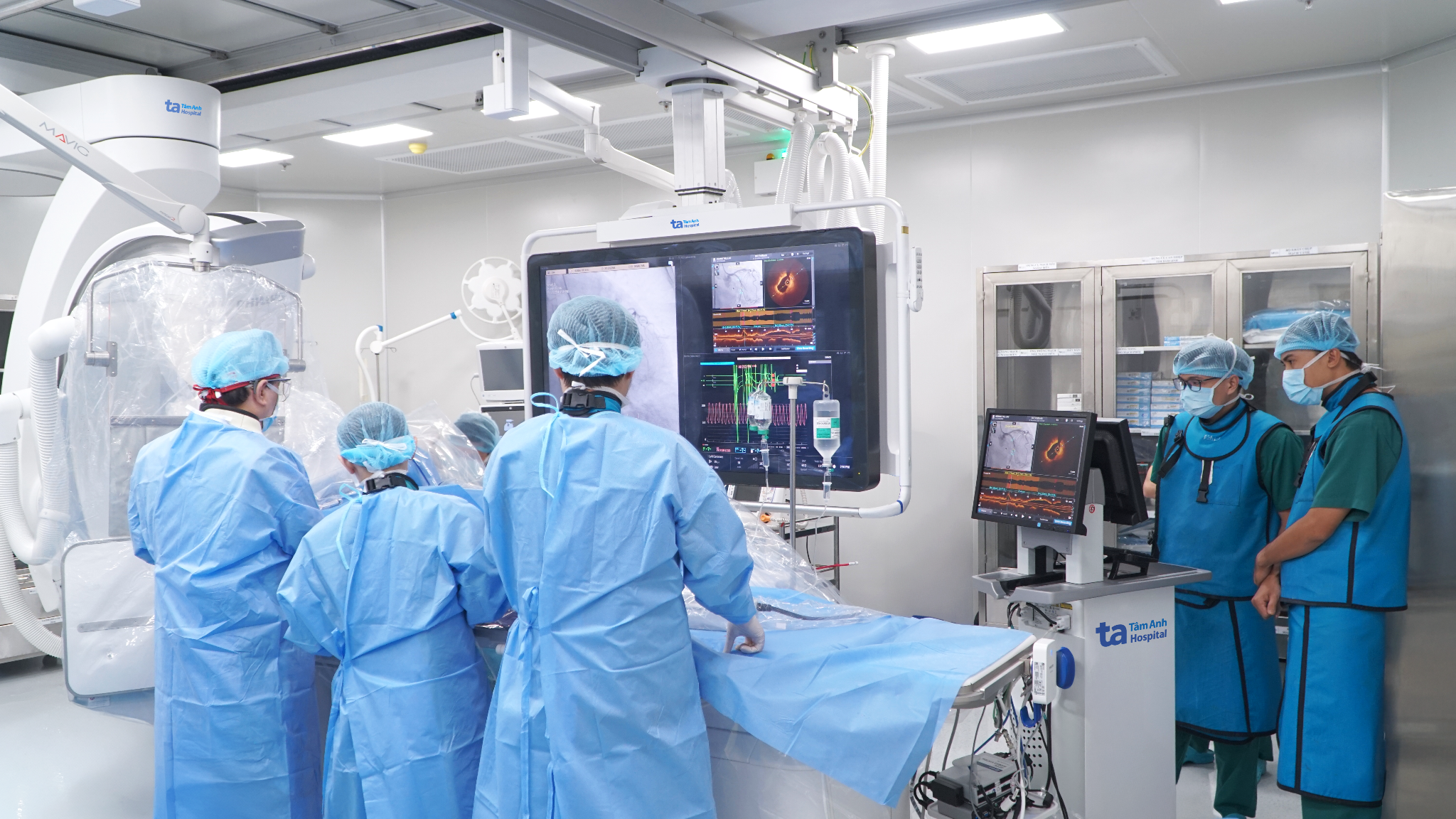Dr. Nguyen Van Duong of the Interventional Cardiology Center at Tam Anh General Hospital in Ho Chi Minh City explained that stents are small, metallic mesh tubes placed in narrowed or blocked arteries to improve blood flow to the heart. This procedure, typically performed during angioplasty, aims to alleviate symptoms like chest pain, shortness of breath, and dizziness resulting from coronary artery disease and acute myocardial infarction (heart attack).
"Stent placement doesn't eliminate underlying heart disease risk factors," Dr. Duong stated. He added that high blood pressure, high cholesterol, diabetes, smoking, and family history can contribute to cardiac events.
Here are the risks of heart attack and other cardiac issues after stent placement:
| Time after stent placement | Percentage risk of cardiac events | Common risks |
| 30 days | 1-3% | Stent restenosis, heart attack |
| 1 year | 5-10% | Stent restenosis, heart attack |
| 5 years | 10-15% | Arterial blockage, heart attack due to thrombosis |
| 10 years | 20-30% | Increased risk of death if risk factors persist |
Dr. Duong clarified that while stents widen blocked arteries and facilitate blood flow, they don't completely cure coronary artery disease. Restenosis can occur at the original site, or new plaque may develop elsewhere. Those who don't manage their blood pressure, cholesterol, and blood sugar, stop medication prematurely, don't adhere to anticoagulant therapy, or fail to maintain a healthy lifestyle face a higher risk of blockages in other coronary arteries.
Stents are beneficial but can't replace natural arteries. They are temporary metallic implants. Complications during the procedure or rejection by the body can lead to severe consequences, including cardiac arrest and death. Patients should seek stent placement at facilities with advanced equipment.
 |
Doctors perform stent placement on a heart attack patient. Photo: Ha Vu |
Doctors perform stent placement on a heart attack patient. Photo: Ha Vu
To prevent heart attacks after stent placement, patients should consider the following:
Medication adherence: After the procedure, doctors prescribe medication to prevent blood clots on the stent's surface, crucial for the first 6 months. Stopping this medication can lead to clot formation, causing heart attacks or sudden death.
Maintaining stable cholesterol levels: Coronary artery disease often stems from fatty deposits (plaque) formed by excess cholesterol, blocking arteries. Controlling cholesterol helps prevent this. Patients should limit unhealthy fats, fatty meats, carbohydrates, processed foods, fast food, salt, and alcohol. They should increase their intake of fish, poultry, fruits, vegetables, grains, and fresh, organic foods.
Quitting smoking: Patients should avoid smoking and secondhand smoke.
Proper breathing: Adequate oxygen supply promotes healing. Breathing exercises and pranayama are beneficial for heart health.
Regular exercise: Moderate exercise like cycling, walking, yoga, and swimming helps prevent heart attacks after stent placement. Patients should aim for at least 30 minutes daily.
Managing comorbidities: Patients with hypertension or diabetes must control their blood pressure and blood sugar.
Regular check-ups: Doctors monitor the stent's condition, allowing for early detection and intervention to prevent heart attacks.
Thu Ha
| Readers can submit heart-related questions here for doctors to answer. |












